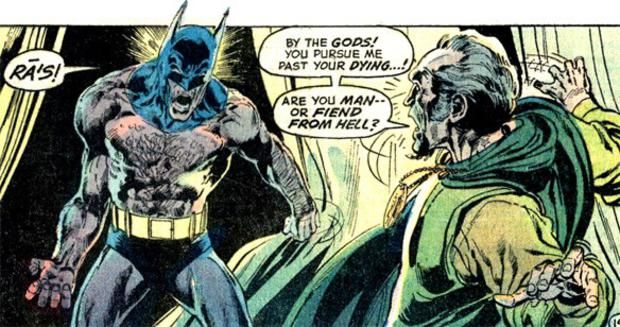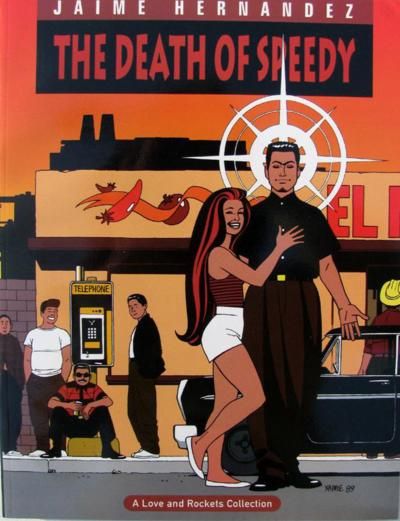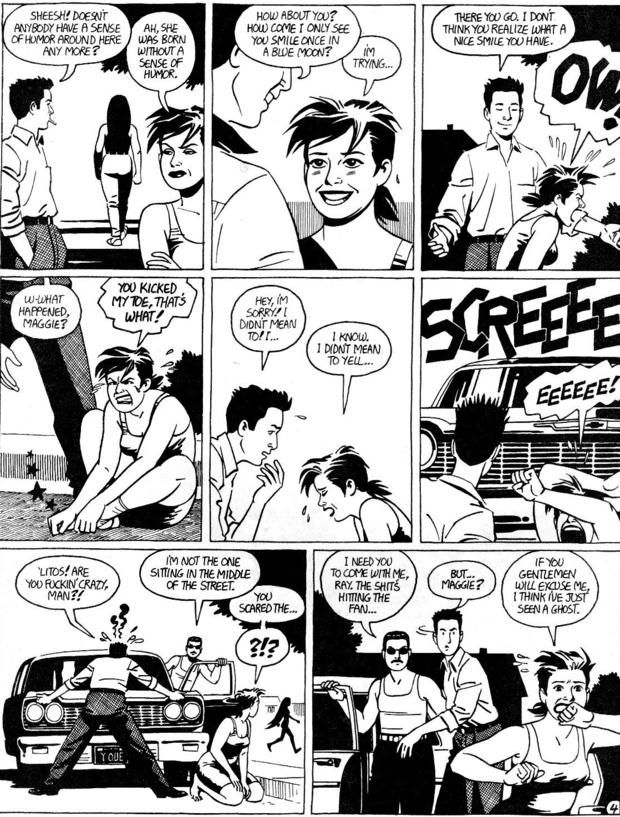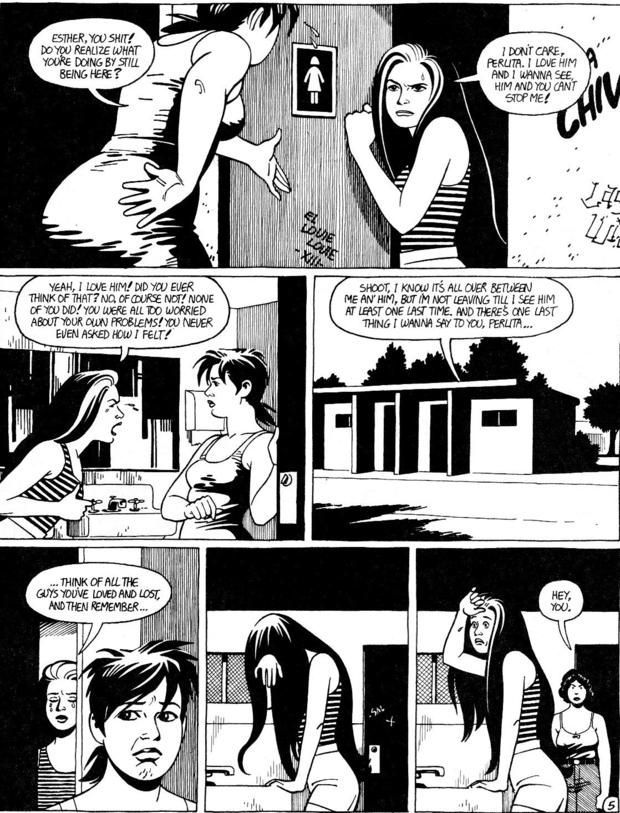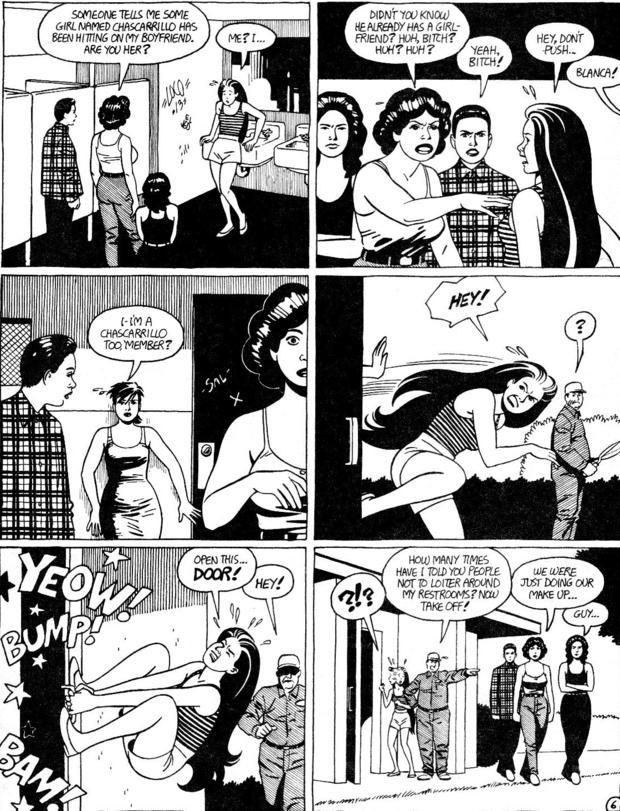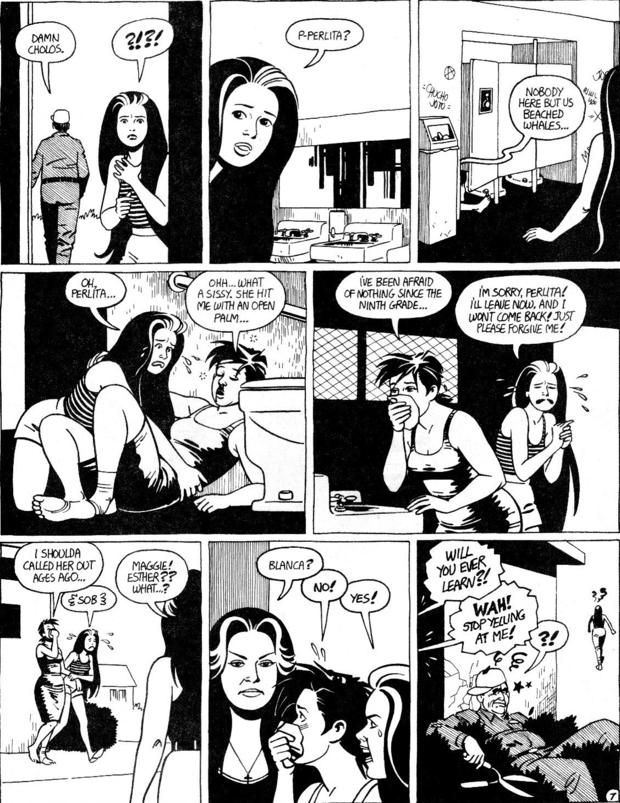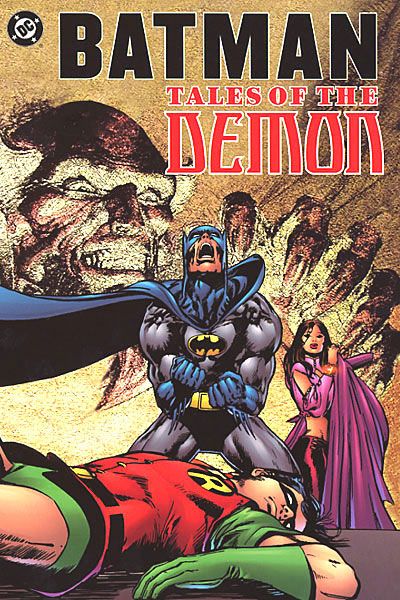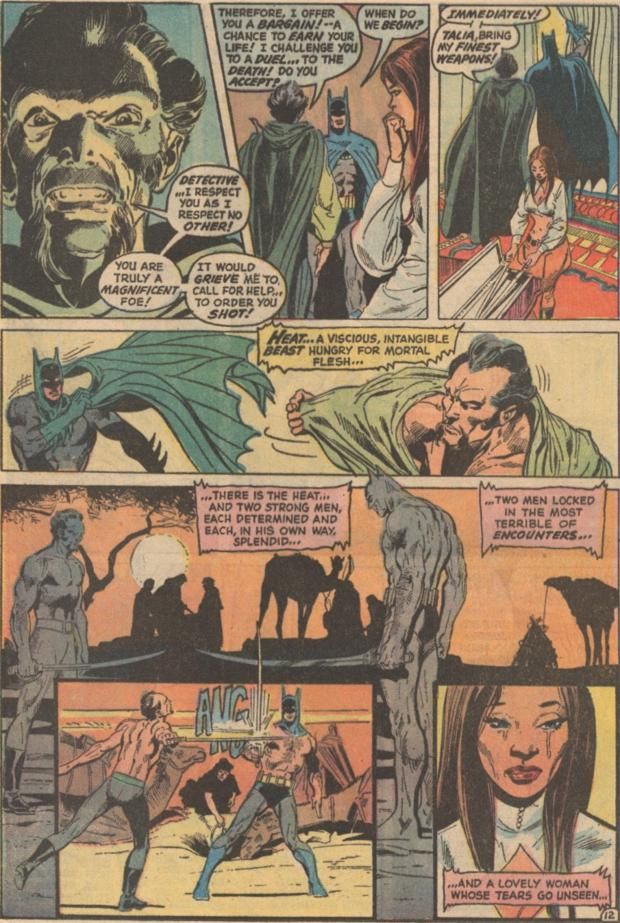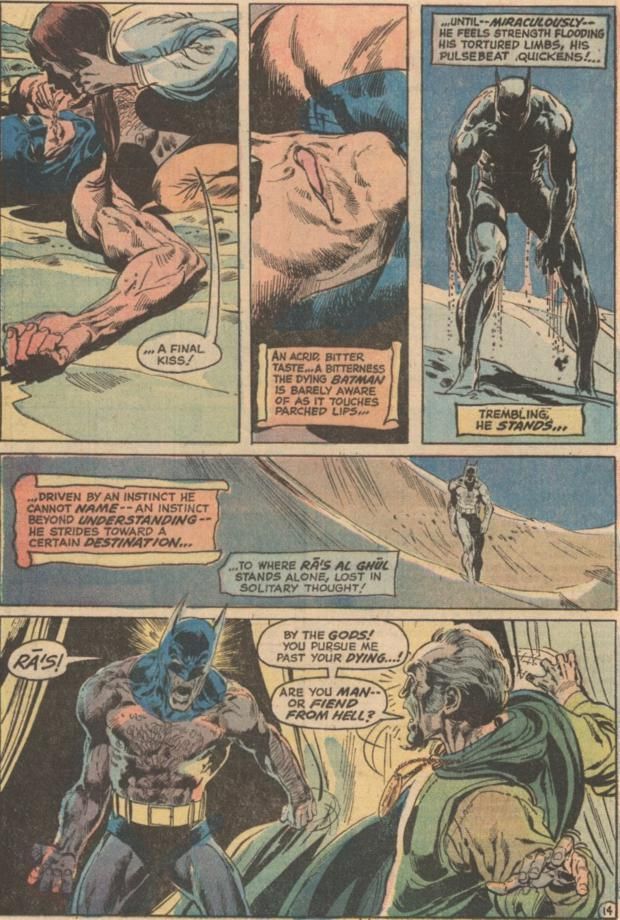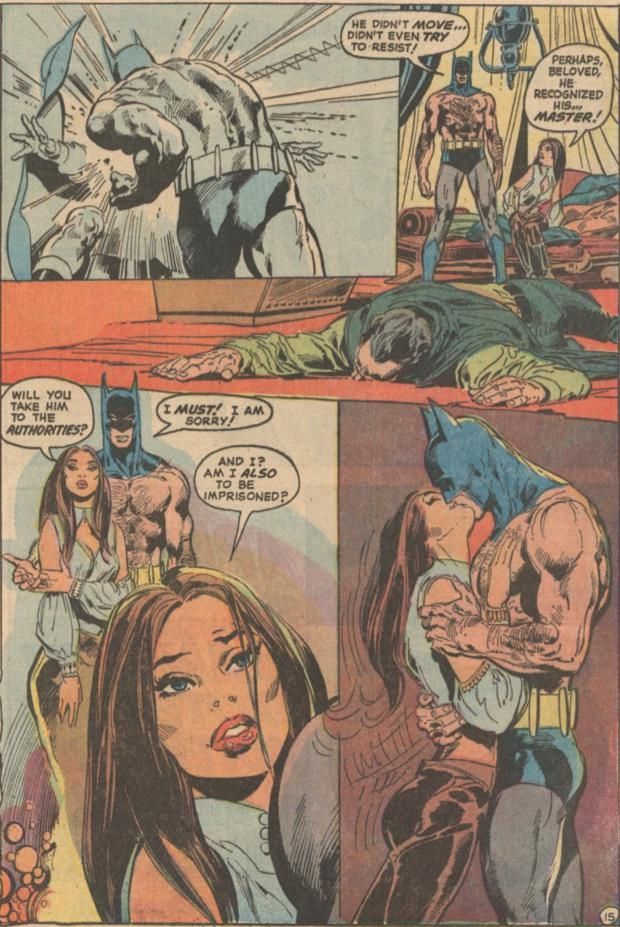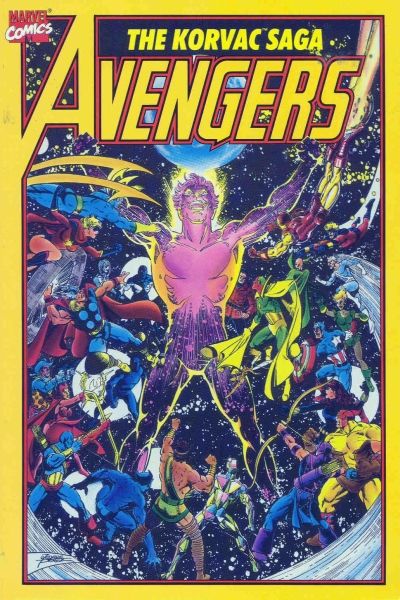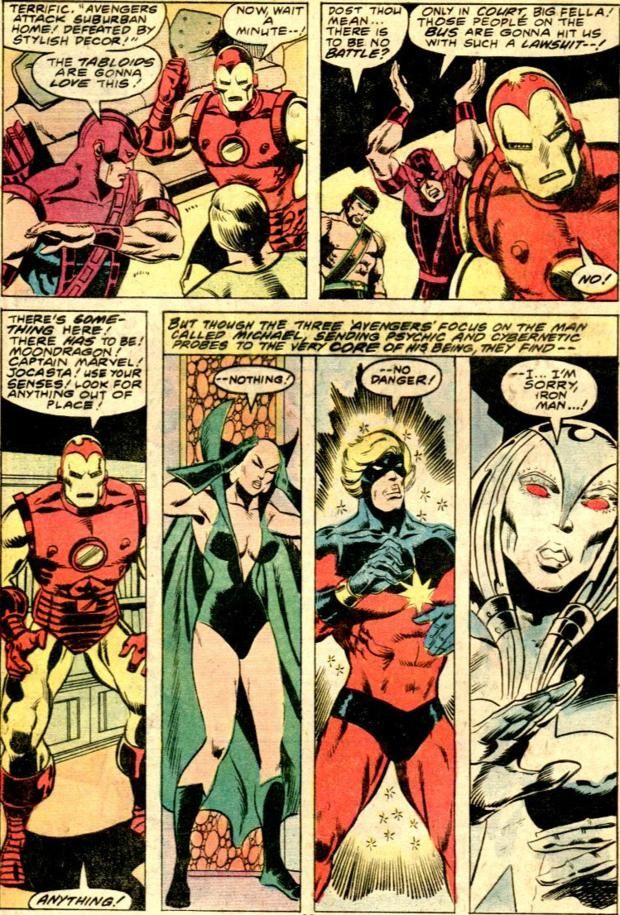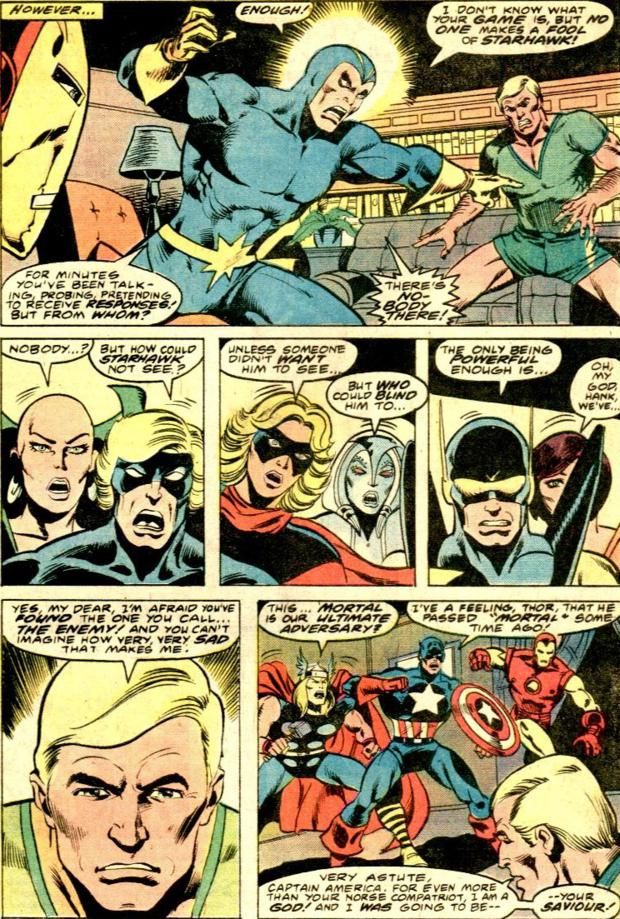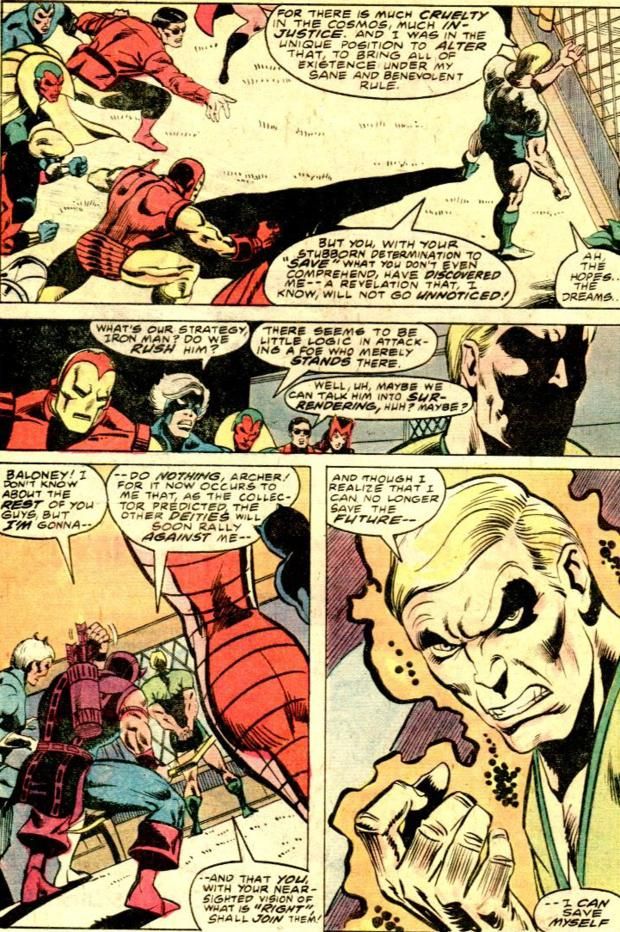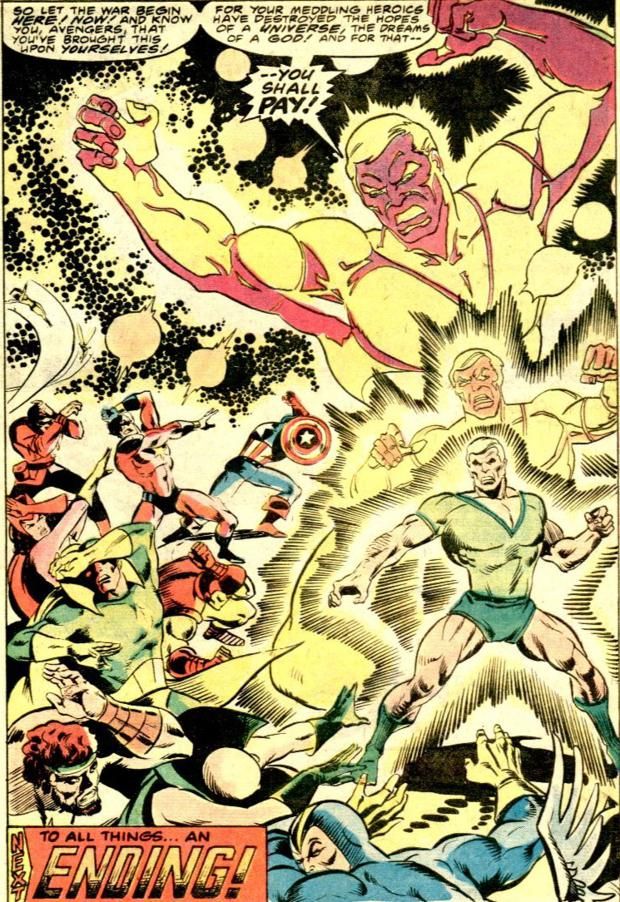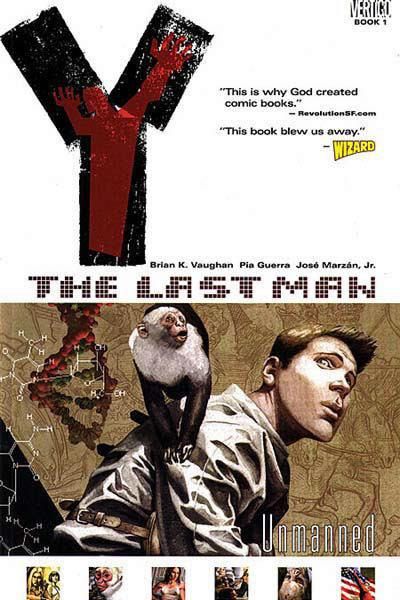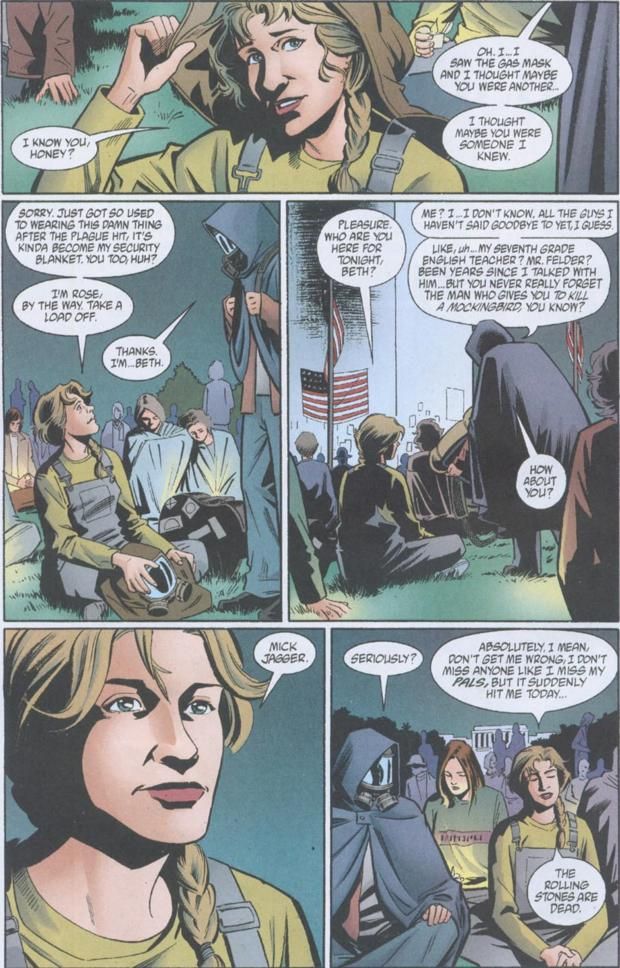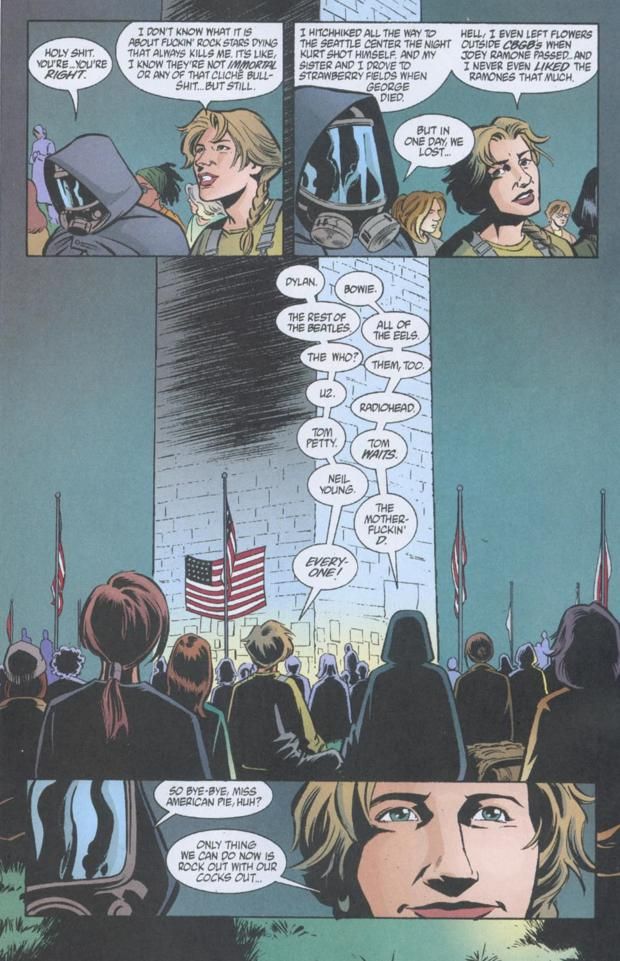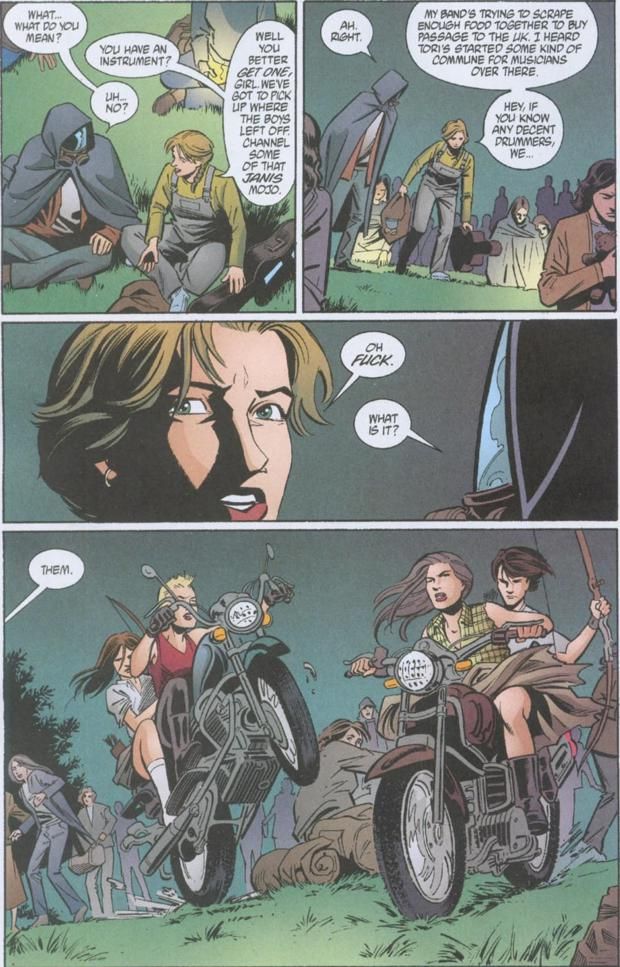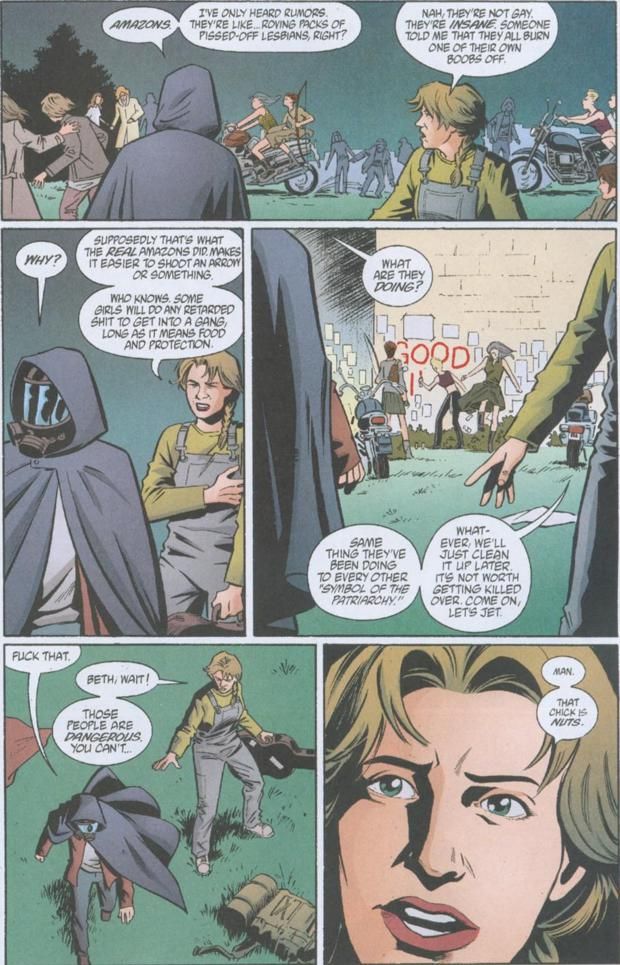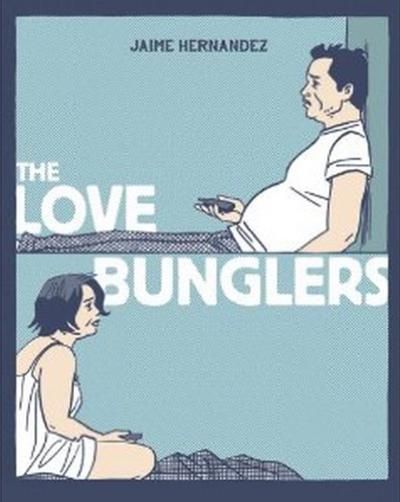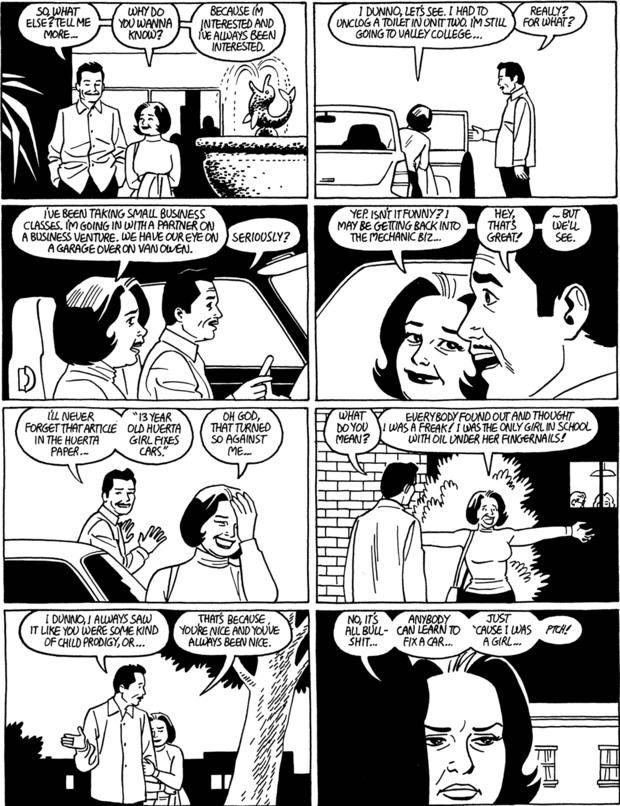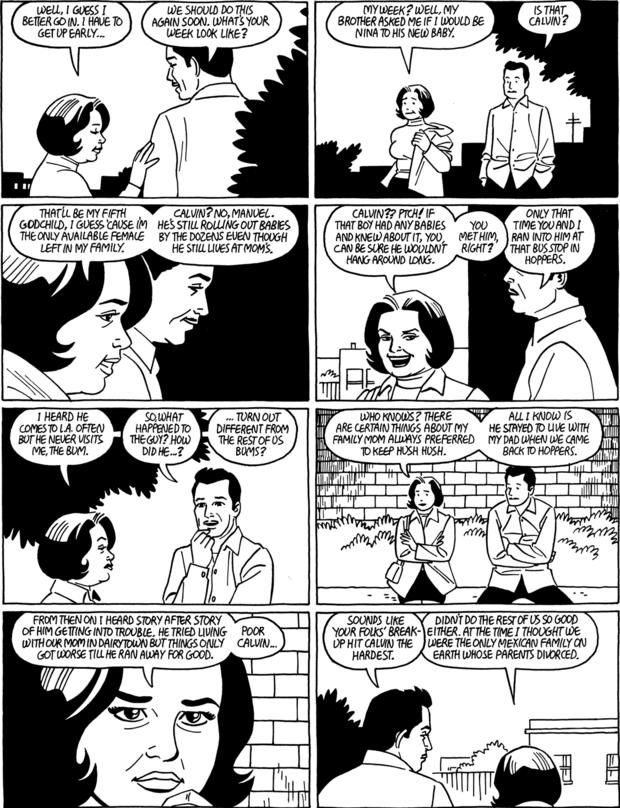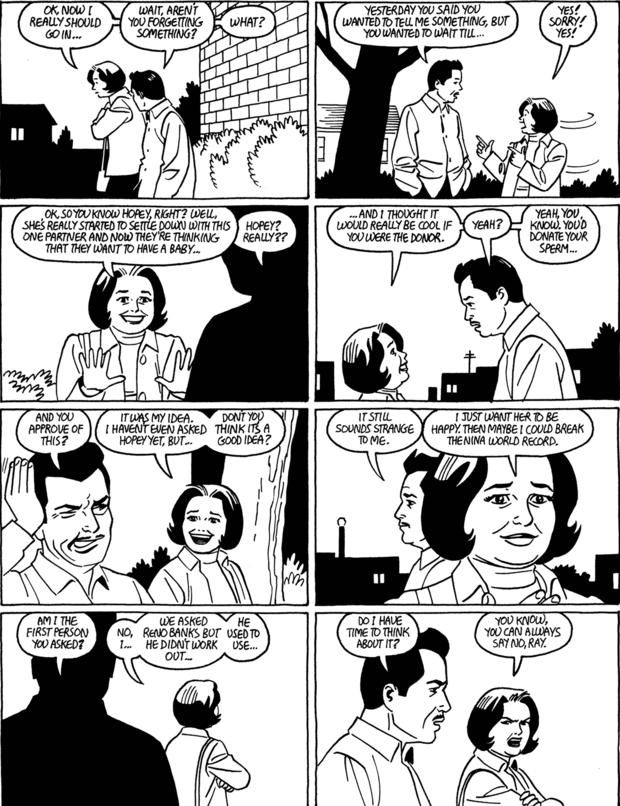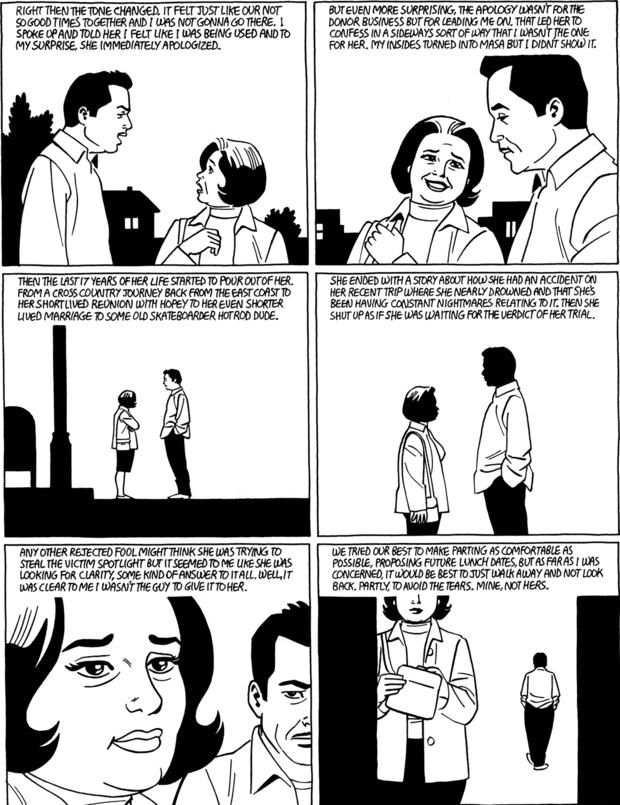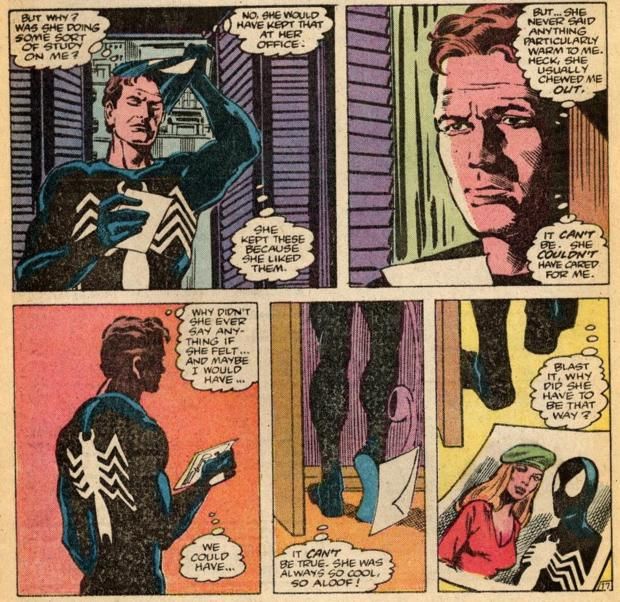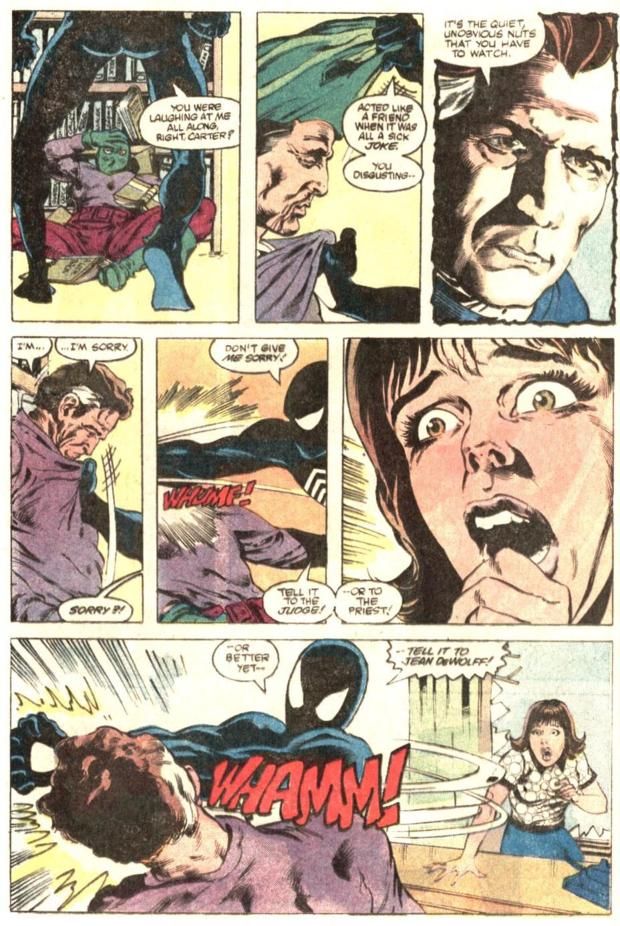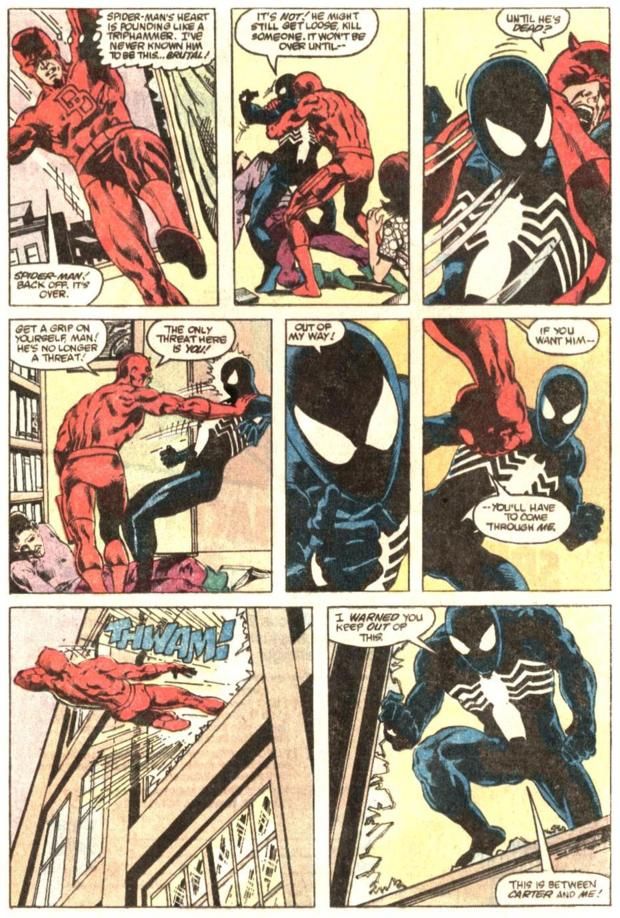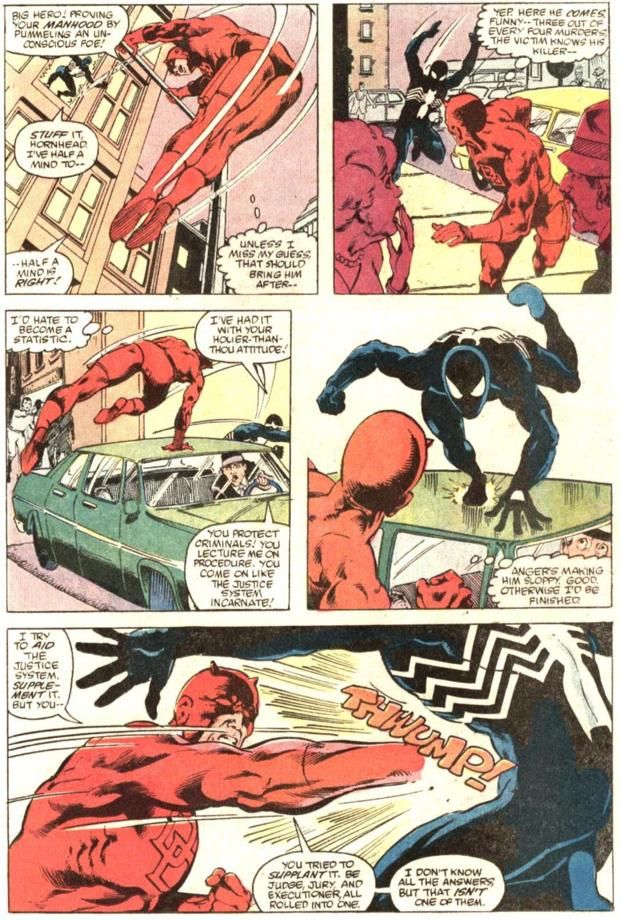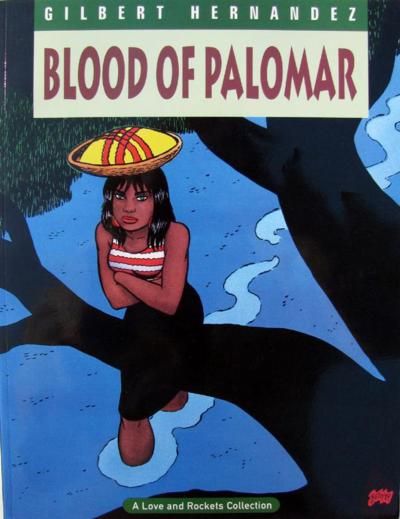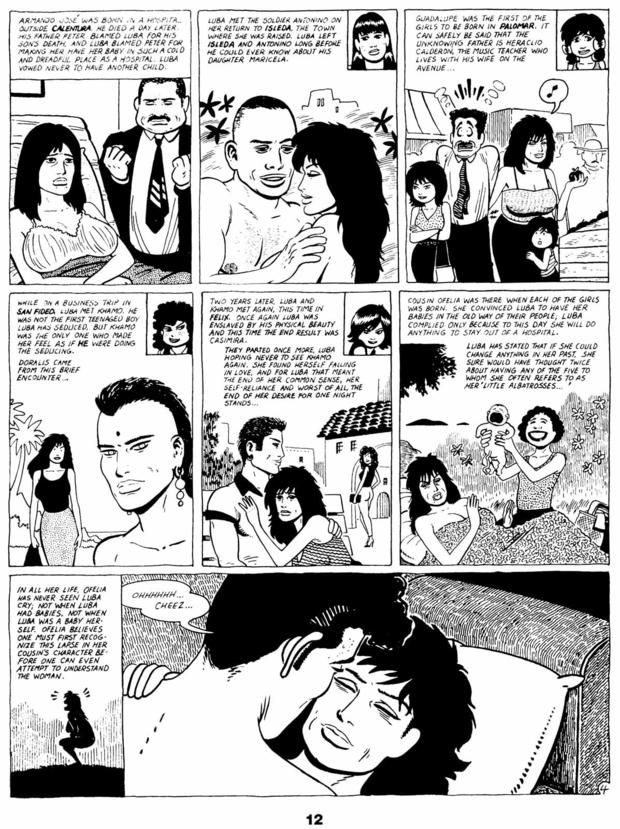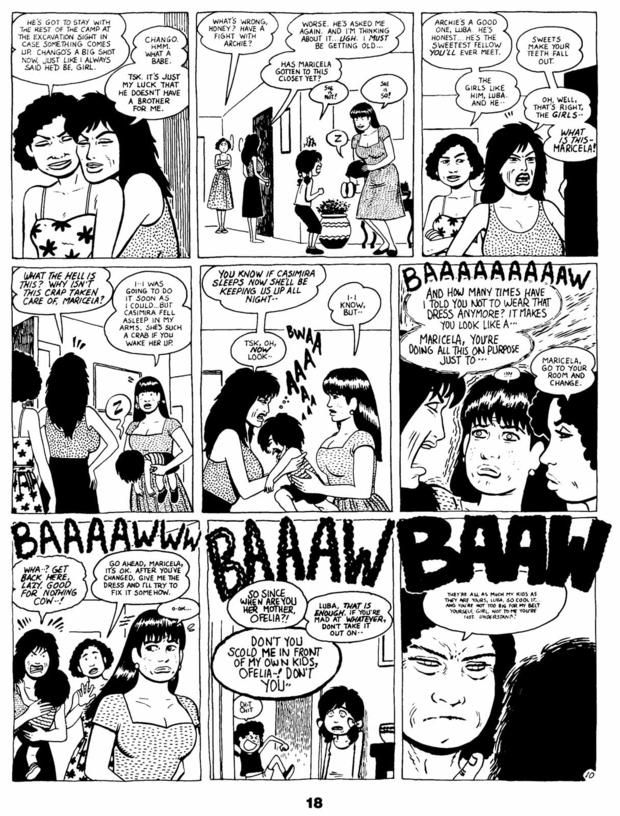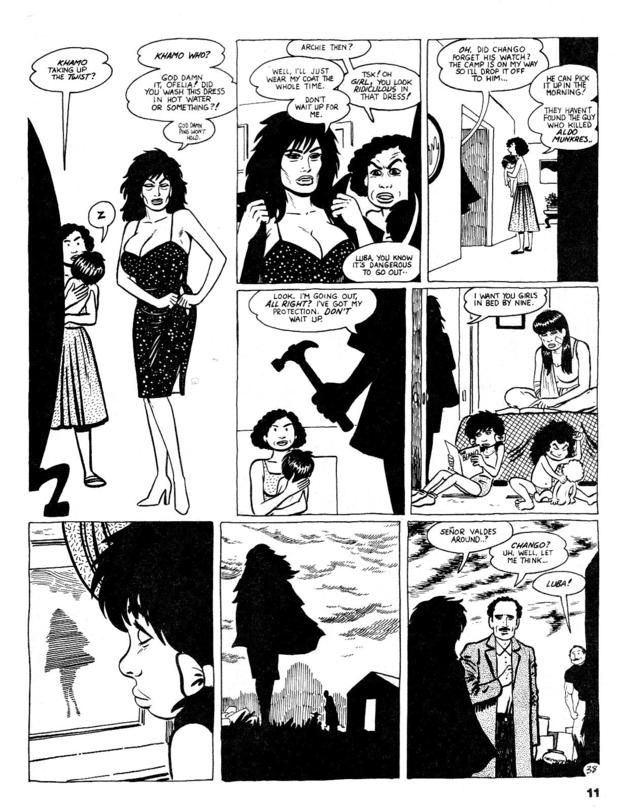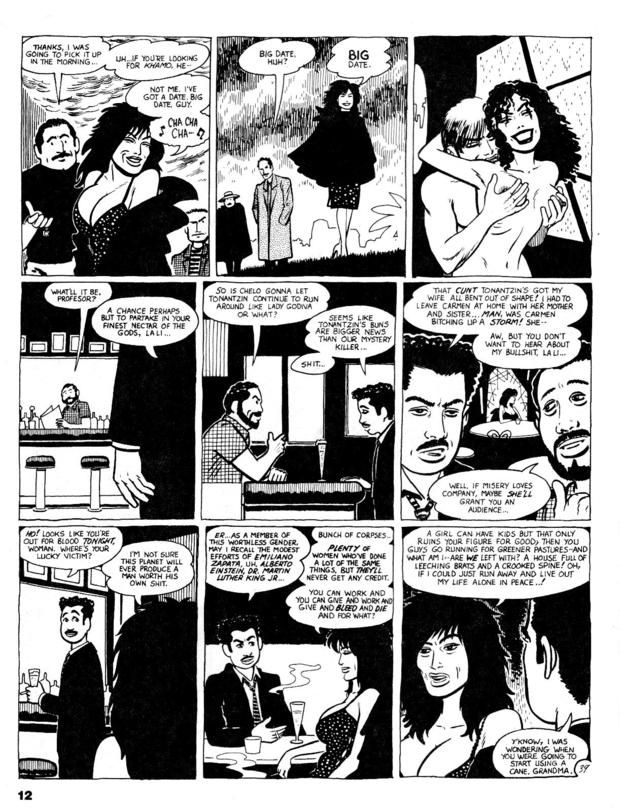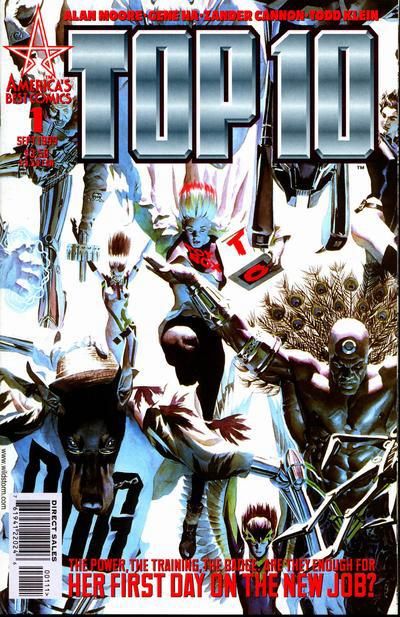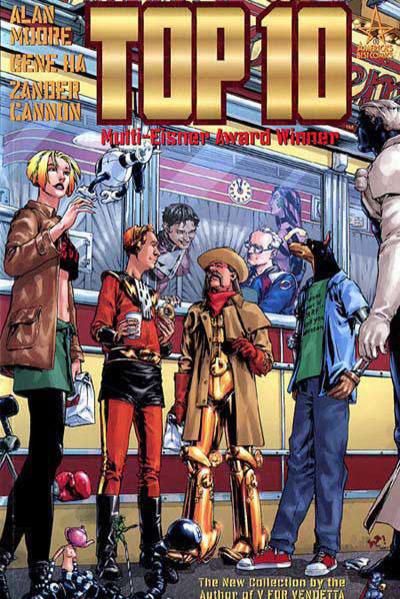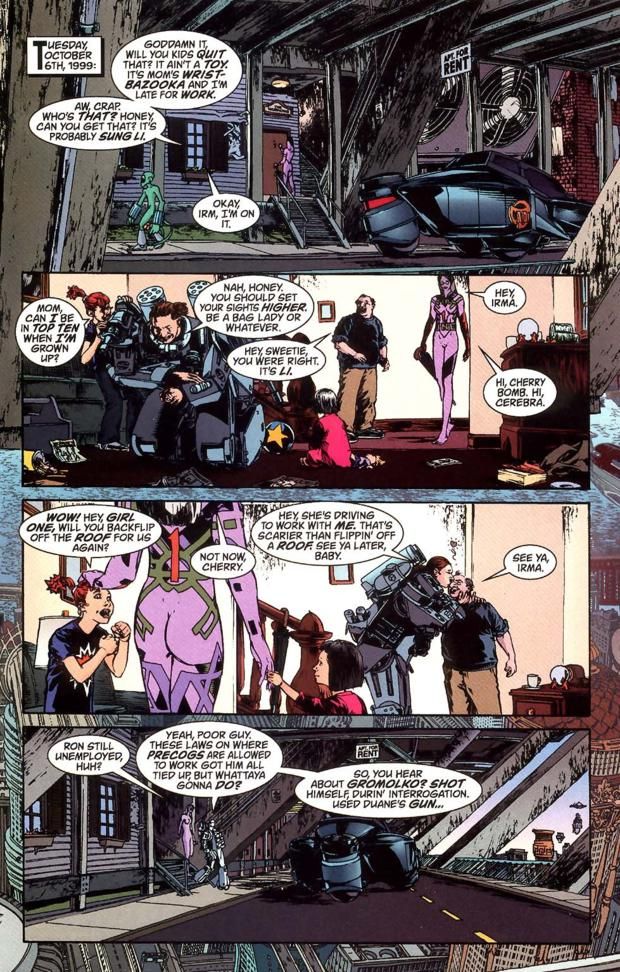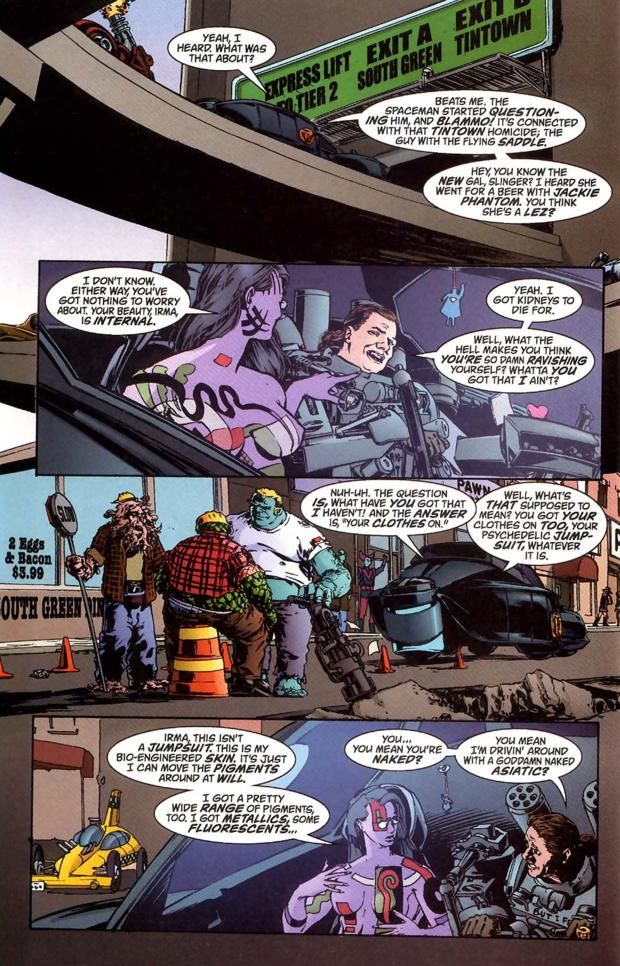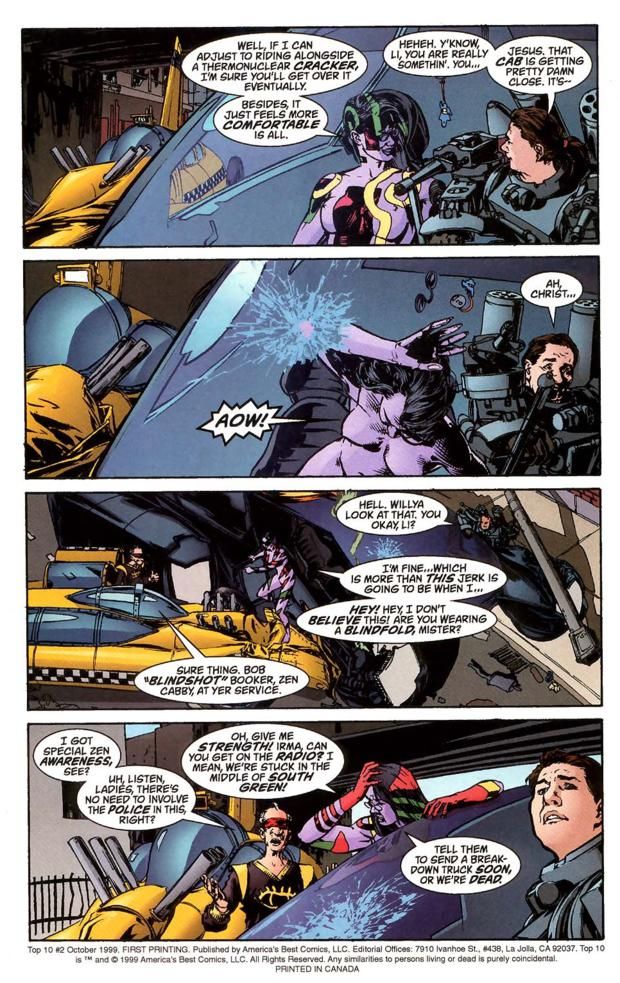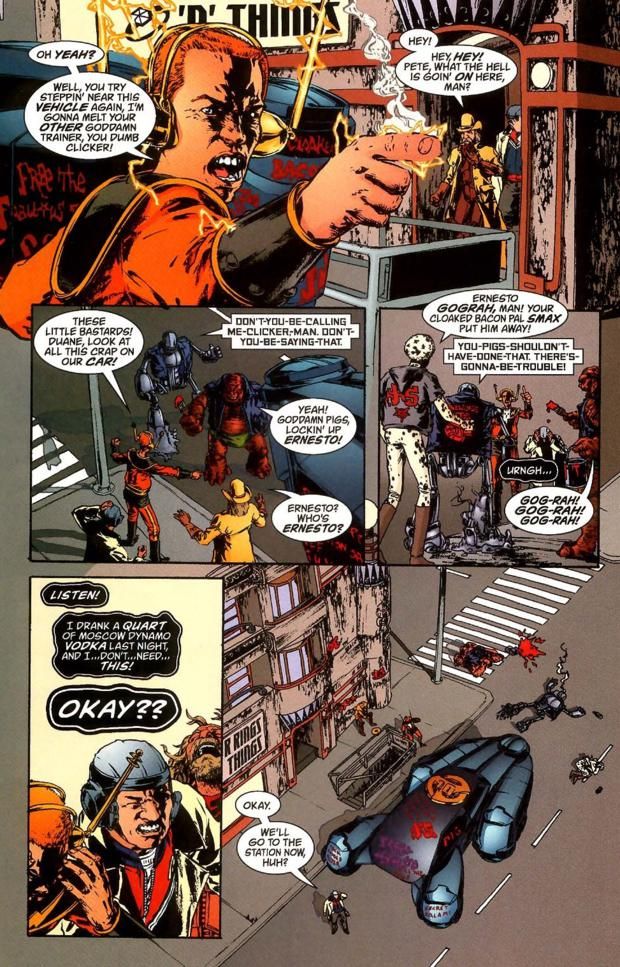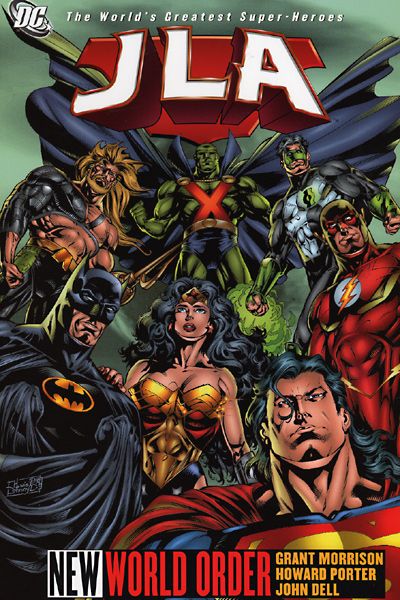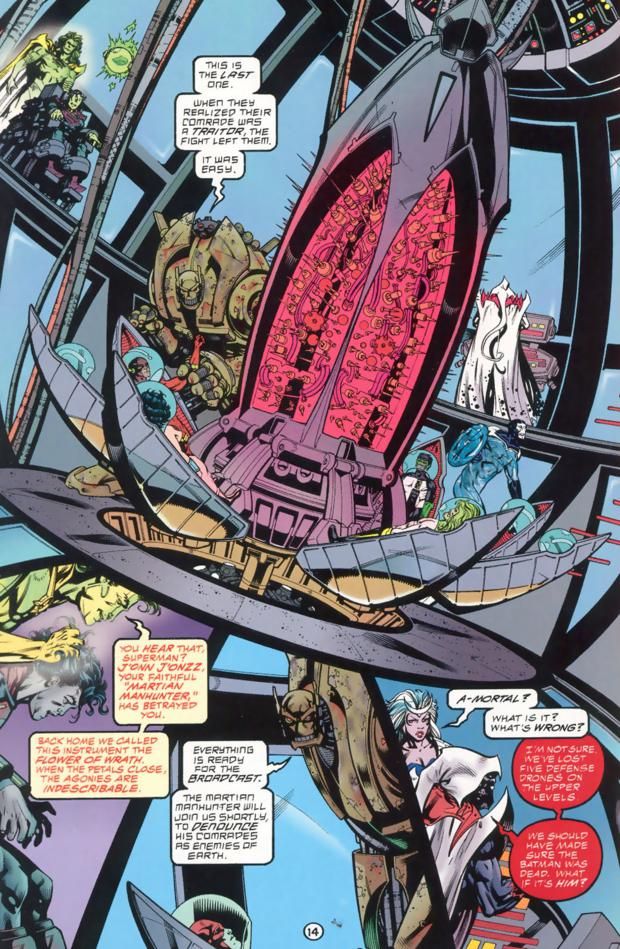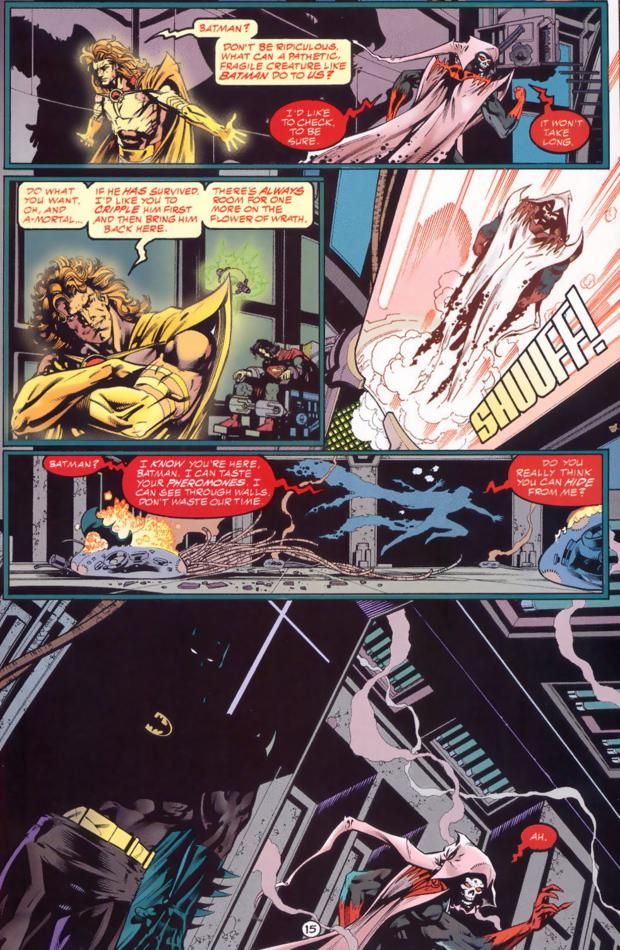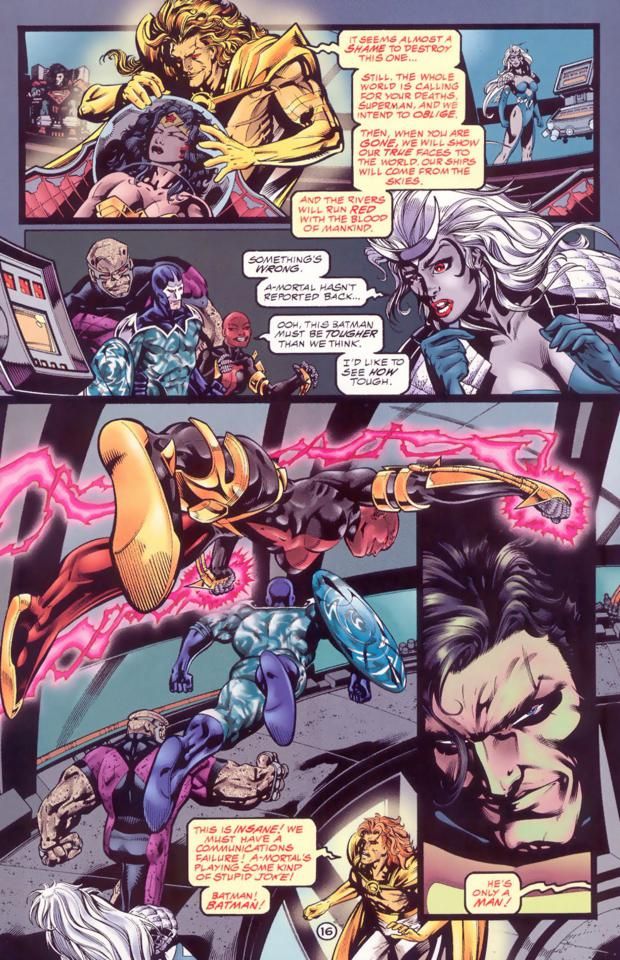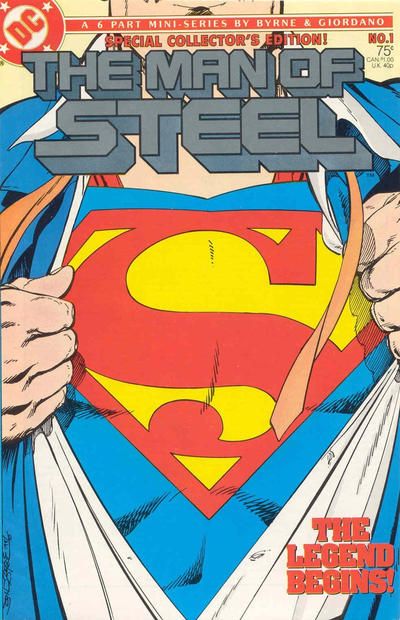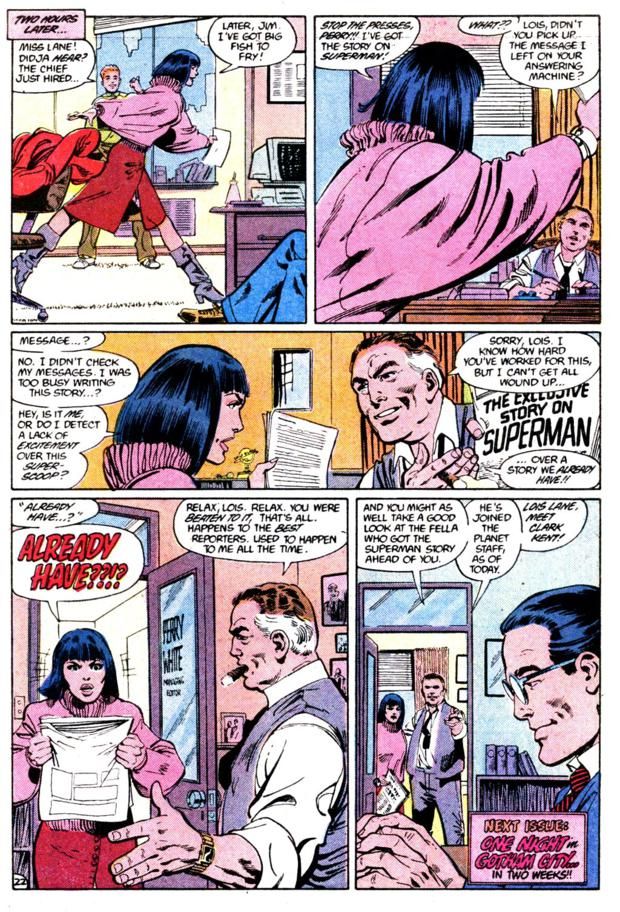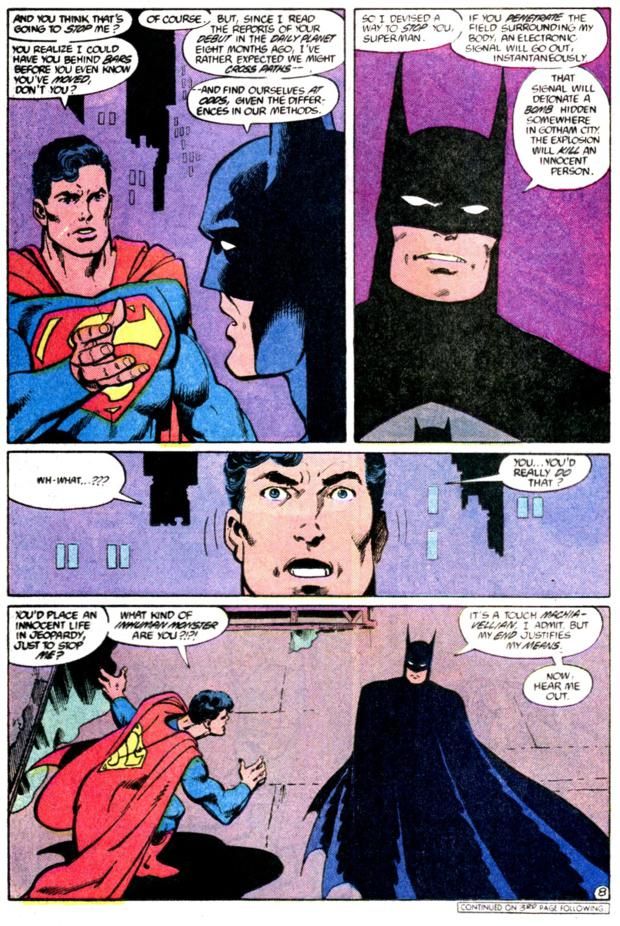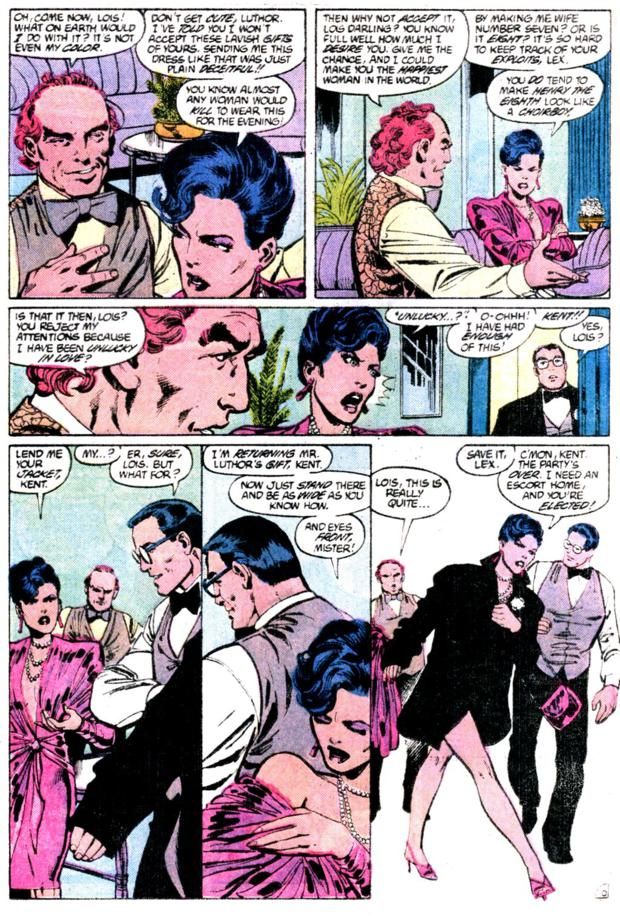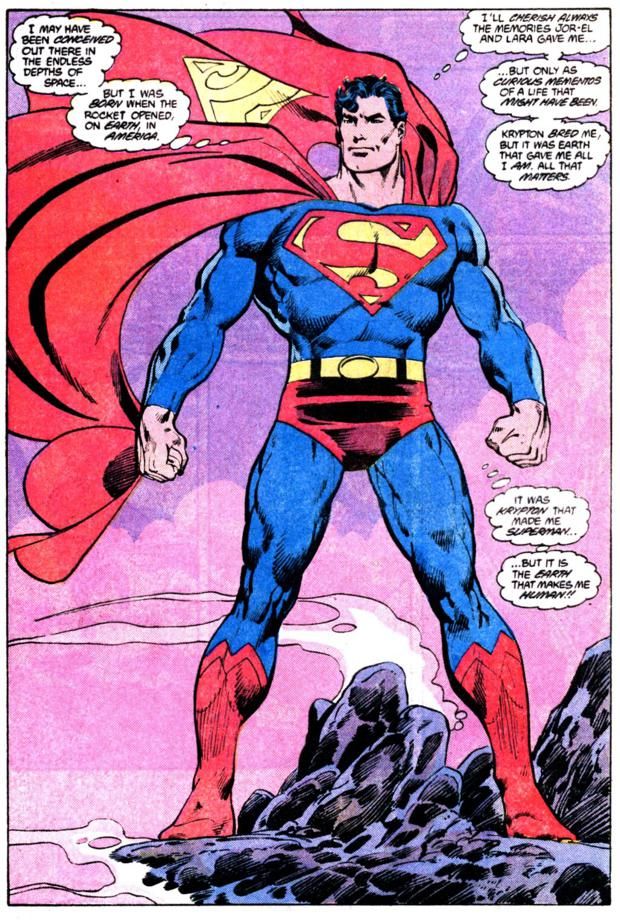The countdown begins....NOW!
First off, over 1000 votes cast! That's awesome, people!! Nearly two hundred more votes than last time. Thanks so much for the turnout! The more people who vote, the better the results are!!
Okay, as usual, the votes are more bundled together at the bottom of the list and things open up as we go along. The results will be five a day, except today, when you get TEN (also they'll be in smaller groups as we get to the very end)! Note, there may be some spoilers ahead! You are forewarned! Here is the master list of all storylines featured so far.
So, without further ado, here are your top 100 favorite comic book storylines!!
NOTE: All of these storyline posts will be image intensive, so I'll be spreading them over multiple pages.
100. "The Death of Speedy" by Jaime Hernandez (Love and Rockets #21-23) – 98 points (1 first place vote)
For a story that is actually CALLED "The Death of Speedy," you would figure that by the time it came around, the actual death would not have as much impact.
You would be wrong.
In one of Jaime Hernandez's strongest story arcs in his long and accomplished tenure on Love and Rockets, the Death of Speedy focuses on a small group of young men and women in the barrio, as Hernandez brilliantly lays their limited life options out plain to see, and it is depressing while still being quite moving.
Even as you sit there and think, "How foolish can these kids be?' when you marvel at the problems their machismo gets them into (and the girls, with their own form of machismo - what IS the female equivalent of machismo?), you still get that this is not really much of an overstatement of the reality of the situation.
Here is an example...
Hernandez seems to truly give us a glimpse into the lives of real people here, and perhaps the most brutal aspect of the whole thing is that as they fight over ridiculous notions like "this is OUR turf" or "he's MY man," their lives continue to prominently revolve around LOVE.
Maggie, the story's protagonist, particularly seems to view love as a motivating factor.
But even ideas based in love can end up in heartbreak and pain, and that's what happens in the Death of Speedy.
That the whole thing is handled in Hernandez's Dan Decarlo-esque artwork, allowing the pathos to almost sneak up on you, like a wolf dressed in sheep's clothing.
99. "First Tale of the Demon" by Denny O'Neil, Neal Adams, Bob Brown, Irv Novick and Dick Giordano (Batman #232, 235, 240, 242-244 and Detective Comics #411) - 101 points (2 first place votes)
The storyline does not really HAVE a name, although I guess you might call it "Daughter of the Demon," but since it is collected in Tales of the Demon with another Ra's al Ghul story, I figure "The First Tale" is an appropriate enough name!
It begins in Detective Comics with a Bob Brown penciled issue, then the story continues to Batman, where Irv Novick and Neal Adams draw three issues apiece (although Adams draws more total story pages, as two of Adams' issues are full-length stories while none of Novick's are).
An interesting aspect of the first stories involving Ra's Al Ghul by Denny O'Neil and friends is the fact that the Batman within these stories is barely recognizable to the super-competent Batman of today. The Batman of the first Ra's story really needs the help of other practically ordinary people to help bring down Ra's.
Ra's and Talia had been around for a little while before the famous first duel between Batman and Ra's took place.
Batman fakes Bruce Wayne's death and takes on the identity of Matches Malone for the first time (Malone is introduced and is killed in these issues, leaving the identity available for Batman to use). He teams up with a scientist who had worked with Ra's (not of his own volition) and they race to stop Ra's and Talia from unleashing a deadly plague. Through the story, Batman gets aid from some unlikely sources, like a famous skier!!
Ultimately, Batman tracks them down only to discover Ra's dead. He takes Talia into custody but is then confronted by Ra's - this is the first time we see the use of the Lazarus Pit. Batman is quickly subdued and Ra's and his daughter take off.
This is probably the first "wow, Batman is tough" scene, as Batman manages to catch up with them and confront them again in the desert. Ra's is suitably impressed.
We then see one of the most amazing four-page sequences in superhero comic book history...
Absolutely stunning work by Adams. This absolutely DEFINED Batman comics of this era. Heck, this pretty much defined Batman for the entirety of the 1970s!
98. "The Korvac Saga" by Jim Shooter, Roger Stern, David Michelinie, George Pérez, Sal Buscema, David Wenzel and Pablo Marcos (Avengers #167-169, 170-171, 173-177) – 103 points
Michael Korvac was born in the future but eventually, after becoming powerful through various events, traveled to the present and discovers the base of Galactus. While there, Korvac gains great cosmic power, and recreates himself as a man named...Michael. The Guardians travel back through time to capture Korvac. In the meantime, the Collector (brother to the Grandmaster) realizes that Korvac is a threat, so the Collector transforms his daughter, Carina, into a being powerful enough to combat Korvac. However, his daughter instead falls in love with Korvac/Michael, and the two go to Earth and begin living a quiet live in Queens, New York.
The Collector then tries to capture the Avengers (and the Guardians) in an attempt to protect them from Korvac, but when Korvac finds out about his plot, he kills the Collector.
Jim Shooter plays the whole thing like a slow burn, as the Avengers deal with the fact that they're dealing with someone who might be able to wipe them from existence as easily as he would flick a bug off of his shoulder (at this point they do not even know of Korvac's change into the normal-looking Michael).
So the Avengers eventually travel to Queens where they discover Michael and Carina living quietly. They investigate their home as they are looking for something there to tie into the powerful being who killed the Collector. Shooter plays with the notion of whether the Avengers are, in effect, provoking a fight with Korvac...
The next issue is a tremendous battle that does not end as well as you might expect for a battle of Earth's Mightiest Heroes against one guy.
Jim Shooter (working with first Roger Stern and then David Michelinie) uses the whole universe at his hands here to create a sprawling epic with tons of guest stars.
The artwork for the storyline was done mostly by David Wenzel, filling in for George Perez.
Go to the next page for #97-94...
97. "Unmanned" by Brian K. Vaughan, Pia Guerra and Jose Marzan, Jr. (Y The Last Man #1-6) – 105 points (2 first place votes)
Unmanned is the first storyline in the Y the Last Man universe.
The conceit of the book is that one day, 99.99999999999999999999999999999999999999% of all the men (and male mammals) on Earth died off. All except one (well, as far as anyone can tell), Yorick Brown, and his male monkey, Ampersand.
When the calamity hit, Yorick was talking to his girlfriend, Beth, who was on vacation in Australia. Yorick was in the midst of proposing her to when everyone died, so now he makes it his life's mission to get to Australia to be with her again.
Of course, things are not that simple, what with him being the only man left on Earth and all. He travels to Washington D.C. where his mother is a member of Congress and she assigns a government agent to work as a bodyguard for Yorick. The two of them (Yorick and Agent 355) are tasked to find Dr. Ashley Mann, a geneticist who may be the only hope at using Yorick to fashion a cure for the plague. However, an Israeli operative ALSO wants Yorick, so the Israelis trash Mann's Boston laboratory, Yorick, 355 and Mann have to head off to Mann's back-up lab in San Francisco.
And so begins an epic journey through a world where their are no longer any men. How will society work with just women?
That's the point of this series, and this first arc introduces us to the concept quite nicely. Pia Guerra's character-driven artwork really helps Vaughan get across the emotional roller coaster these characters are on in this brave new world.
Here's an example of how the death of all the men have affected society when Yorick encounters a young woman (who he mistakes for a man at first because she's wearing a gas mask, just like him - which is what he uses to disguise himself)...
And we see Yorick's hot-headed nature when he sees the Amazons...
Yorick's impetuousness drove a whole lot of adventures as the series went along.
96. "The Love Bunglers" by Jaime Hernandez (Love and Rockets: New Stories #3-4) – 108 points (3 first place votes)
It's fascinating. We as comic book readers are used to long-running relationships. Hell, Superman and Lois Lane went back and forth for over fifty years before they got married! But we're typically used to relationships that do not actually go by in real time. That is what makes the relationship at the core of Jaime Hernandez's brilliant "The Love Bunglers" so remarkable. In the aforementioned "Death of Speedy" storyline, Speedy Ortiz was the bad boy that Maggie wanted even though Speedy's friend Ray seemed to be the better fit for her. Now, thirty or so years later, Ray and Maggie have a second chance at love. If, of course, they don't bungle it. The name of the storyline, though, IS "The Love Bunglers," so you might have some idea at how it goes. Hernandez has done such wonderful work with Maggie over the years that we know her as well as we know any longtime friend or family member. We know how she works. We know her quirks. We know her best qualities. We know her worst qualities. And all of them are at play when she gets involved with Ray again, with both now middle-aged. Hernandez's skills are readily apparent in the control he maintains over their interactions, both with the dialogue and also his incredible skills with characterization. It's stunning, really, to see how good he was with these characters thirty years ago and yet he is even BETTER now!
Check out this date. Try not to be affected by these interactions...
Hernandez uses flashbacks to gives depth to the modern day interactions, as we the reader know exactly how the past is affecting the present but no one else in the present knows what we do. It is pretty heartbreaking and powerful stuff. But, like all stories involving Maggie, the power of love is always present. Man, Maggie is such an awesome character.
It is heartening to know that the modern masters like Jaime Hernandez can still put out gems like "The Love Bunglers" decades into their career.
95. "The Death of Jean DeWolff" by Peter David and Rich Buckler (plus many inkers) (The Spectacular Spider-Man (1976) #107-110) – 109 points
The Death of Jean DeWolff is a powerful examination of the problems you often get when you try to strictly apply morality to the world of superhero comics.
The story opens with the murder of Captain Jean DeWolff, a background supporting cast member of the Spider-Man books (very background).
It turns out that she was murdered by a mysterious new villain called the Sin-Eater.
Throughout the story, through the murderous efforts of the Sin-Eater, Spider-Man and a guest-starring Daredevil continue to find themselves put into situations where they are unsure of themselves. Twice Daredevil is forced to choose between giving up his secret identity and doing something to possibly help stop the Sin-Eater, and both times he chooses to preserve his ID.
Spider-Man, meanwhile, is even MORE upset about the situation when he learns that DeWolff had a heavy unrequited crush on him.
By the time the pair catch the Sin-Eater, Spider-Man is willing to kill him, and Daredevil has to stop him...
Few writers challenge ideas like this as strongly as Peter David does in this story. Plus, this is one of the best Spider-Man/Daredevil team-ups of all-time. Rich Buckler does the art with a variety of inkers (Brett Breeding, probably most prominently). Very good stuff.
This was Peter David's first comic book storyline and wow, what a great introduction of Peter David to the comics world!
94. "Blood of Palomar" by Gilbert Hernandez (Love and Rockets #21-26) – 110 points (4 first place votes)
We've already featured Jaime Hernandez's most prominent Love and Rockets works and now we take a look at his brother, Gilbert.
Gilbert's most significant work was examining the lives of the inhabitants of Palomar, a fictional South American country where crazy things happen.
This storyline, originally published under the name "Human Diastrophism," follows the people of Palomar as a serial killer strikes the town.
While the serial killer aspect of the story might be the most notable aspect from the outside of the story, within the comic it exists more as a plot device to push the character development that the Hernandez brothers are so well known for.
There IS a mystery, but it is solved (for the reader) fairly early - instead, the main part of the story is seeing all the many (MANY) characters interact with each other as they all grow, some for the better and some for...well, I wouldn't say "for the better."
Gilbert's most notable Palomar character, Luba, has an important storyline as she begins to re-think her life as she grows older...
and decides that she wants to change the way she relates to her children as they grow older. But deciding how to do so is no easy task...
Heck, Luba is not even sure about her own place in the world...
This is such a detailed, multi-layered storyline - it's very dense, but accessible, and Hernandez' art should get a lot of that credit, as he knows how to simply draw the reader in with seemingly simplistic designs.
Things get even MORE complicated in later Palomar stories, so if you wish to catch on before things get even denser, this is the story to seek out!
Go to the next page for #93-91...
93. "Top 10 Season 1" by Alan Moore, Gene Ha and Zander Cannon (Top 10 #1-12) – 112 points (2 first place votes)
One of writer Alan Moore's "high concept" comics, Top 10 was about a police precinct (the tenth, natch) in a city where everybody was a superhero - the cops, the crooks and the civilians (even the cats and mice had powers!).
Once you get past the main concept, the book was almost exactly like a comic book form of the television series Hill Street Blues, where each issue would work like an episode of the show. The show tended to dwell upon the cops themselves and less the procedural aspect of the situation, and that is exactly the same with Top 10 (Daniel Travanti, the actor who did such a marvelous job as the Captain of the Hill Street Precinct, described the show as "A character drama where every character happened to work for the police in some form or capacity").
Alan Moore developed a large cast of interesting characters and then threw them together into an engaging mix of characters. Here's an example...
Meanwhile, layout artist Zander Cannon and and penciler and inker Gene Ha were right there with Moore - just as much part of the book as, say, Kevin O'Neill was part of League of Extraordinary Gentlemen or JH Williams was part of Promethea. This was a true collaboration. Cannon, particularly, would add little in-jokes in the panels (Moore, too, would have little in-jokes frequently in the script, but Cannon would add even more).
Once you've accepted the series as "Hill Street Blues but everyone is a superhero," then you can see how Moore deftly works in a lot of the same topics that Hill Street hit on, like racism, only he does so with the racism being against, say, robots.
In any event, it's a really strong first "season" (see the TV influence even there?), and it is a shame that Moore never did more, but at least Cannon and Ha later did some follow-up work with the characters!
92. "New World Order" by Grant Morrison, Howard Porter and John Dell (JLA #1-4) – 115 points (1 first place vote)
Grant Morrison's JLA was perhaps THE most influential superhero book of the 1990s, as it influenced even the Authority (the widescreen aspect, at least).
"New World Order" was the first story arc of the "brand new" JLA, which consisted of the seven original members of the Justice League, or at least the seven superhero names of the original Justice League, as the Green Lantern and the Flash were both the successors of the characters who had formed the Justice League.
In this initial storyline, a group of aliens come to Earth and seemingly make the Justice League obsolete. The League knows that there is something up with these aliens, and soon discover that, yep, there are some sinister motivations going on behind these guys.
The secret behind the aliens is very clever, and it is especially notable how Batman discovers their secret (and how he exploits it).
This story first established Morrison's take on Batman as the guy who prepares for everything (or "Bat God," as some people refer to it)...
The other heroes in the book get notable scenes, as well, especially the Flash, who uses some of the knowledge the original Flash gave him to take down a villain.
The art by Howard Porter and John Dell is slick and apt for the sometimes over the top action of the book.
This series quickly became the most successful title for DC in the late 1990s, which was notable because the Justice League line of books had gotten pretty low in the sales charts before this title revitalized the group.
The "widescreen" tone of this book was soon picked up by many other books, including The Authority.
91. "The Man of Steel" by John Byrne and Dick Giordano (The Man of Steel #1-6) - 116 points
John Byrne and Dick Giordano relaunched the Superman mythos in this excellent mini-series that re-establishes the entire Superman mythos ahead of the Superman titles all relaunching with a new status quo. What was so shocking about Byrne's reboot was how much he kept the same. When you think about the reaction to Byrne's changes at the time and then look at the 2011 Superman reboot? It's like apples and oranges! Superman and his supporting cast were largely the same, with the biggest changed being Lex Luthor now as a respected businessman. There was never a Superboy, Krypton was a cold and desolate place, Superman was no longer "born" until he landed on Earth and Jonathan and Martha Kent still being alive with Clark as an adult. Clark Kent, I suppose, also saw a change as he was no longer so mild-mannered but there Byrne was more about returning to the original Clark Kent, who was not quite as mild-mannered as later interpretations would have him become. In each of the six issues, Byrne re-established some part of the Superman status quo. #1 saw Clark gaining his powers for the first time, #2 introduced us to Lois Lane, #3 has Superman and Batman meet for the first time, #4 introduced us to Lex Luthor, #5 gave us Bizarro and #6 had Clark learn about his Kryptonian heritage.
It is difficult to pick out a representative sequence, so instead I'll pick out four notable pages.
First, after Lois Lane gets her first interview with Superman, she is disturbed to find out she has been scooped by a mysterious stranger...
Superman's first meeting with Batman did not go over so well...
In one of my favorite pages of the series, Lois Lane shows that she cannot be bought...
Finally, in the last page of the series, Superman reflects upon his newly acquired knowledge of the history of his home planet...
Powerful stuff.
Okay, that's it for #100-91! Check back soon for #90-86!

